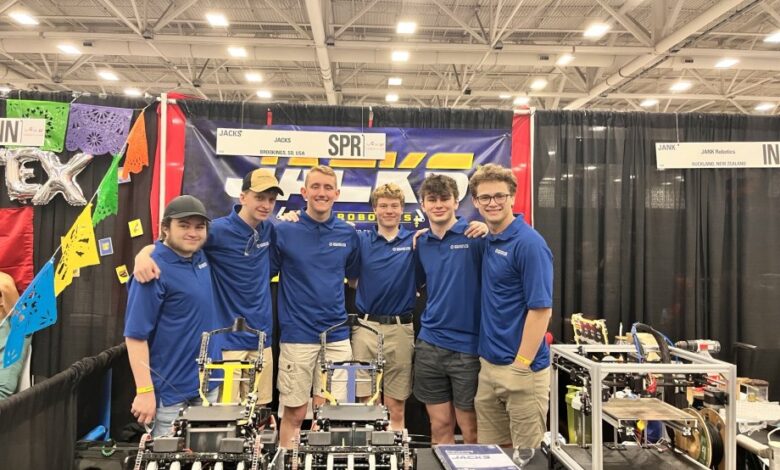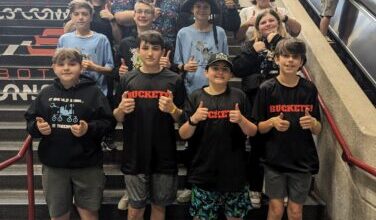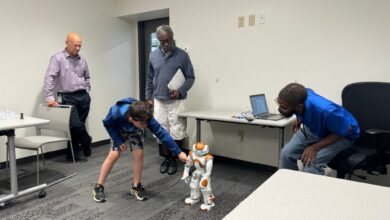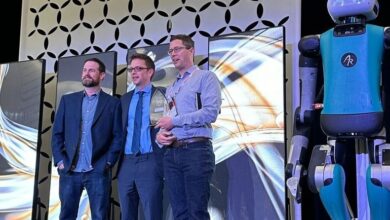SDSU Robotics Club makes mark at Vex U World Competition

Competing in the Vex Robotics World Competition in Dallas April 28-30, the SDSU Robotics Club earned the excellence award and finished second in skills. There were 113 teams entered in the Vex U event and more than 600 teams there for other Vex Robotics competitions.
Club President Hailey Gruber said the excellence award is based on a team’s interaction with other teams, the notebook compiled during the season, the creativity displayed in building the robot and interviews with judges.
The skills competition involved autonomous and driver-directed rounds.
SDSU was ranked fourth in the qualifying round with a perfect 9-0-0 mark. The team was stopped in their undefeated streak in the semifinals of the Spirit Bracket.
Team members who attended were Ben Hinz, St. Cloud, Minnesota; Cyrus Nelson, Minneapolis; Charles Peterson, Sauk Rapids, Minnesota; Noah Welsh, Council Bluffs, Iowa; Todd Mueller, St. Charles, Minnesota; and Ian Brueggeman, Sioux Falls. Attending as executive members of the club were Gruber, Richmond, Minnesota; and Tyler Loecker, Mitchell.
Each year the VEX U game changes with the 2024 game called Over Under, in which two teams to compete to score points by scoring game objects in their goal and elevating their robot on a three-foot vertical pole. Each team designed and built two robots using VEX-sourced motors and control systems, freedom-of-custom electronics, pneumatics, 3D printed parts and machined aluminum.
For each two-minute match, each team has to program its robot to drive and score in a full autonomous 45-second period and driver-controlled 75-second period.
The game for 2025 is High Stacked. Gruber said, “The team is excited to see what this has to offer. People can expect to see some cool partner climbs and so many more innovative things.“



